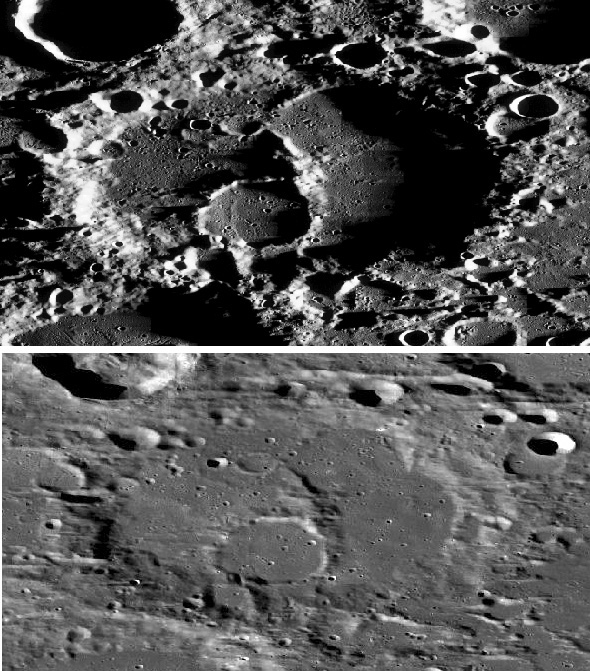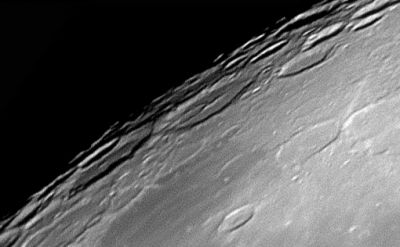Xenophanes
Contents
Xenophanes
|
Lat: 57.5°N, Long: 82.0°W, Diam: 125 km, Depth: 3.14 km, Rükl: 1, Nectarian or pre-Nectarian |

LRO low and high Sun images

Howard Eskildsen
Xenophanes at centre, Volta south-southwest of it, and Cleostratus to the north-northeast.
Images
LPOD Photo Gallery Lunar Orbiter Images
- Xenophanes was captured on Lunar Orbiter IV's frame LO-IV-190-med. The location of Xenophanes is east of the farside walled plain Poczobutt.
- Research Lunar Orbiter IV photography: Danny Caes
Maps
(LAC zone 21B3) USGS Digital Atlas PDF
Description
Description: Elger
(IAU Directions) XENOPHANES.--But for its position, this deep walled-plain, 185 miles in diameter, would be a fine telescopic object, with its lofty walls, large central mountain, and other details.
Description:
There is a description of how to find Xenophanes on the 15th day of the lunar cycle on page 64 of the Photographic Atlas of the Moon by Chong, Lim, and Ang. - astrokat
Description: Wikipedia
Additional Information
- Depth data from Kurt Fisher database
- Westfall, 2000: 3.14 km
- Cherrington, 1969: 3.2 km
- Central peak height
- Sekiguchi, 1972: 1.1 km, 1.4 km, 1.2 km "Three peaks on a long ridge" from north to south - fatastronomer
Nomenclature
- Named for Xenophanes of Colophon (570 – 480 BC), a Greek philosopher, poet, and social and religious critic. His poetry criticized and satirized a wide range of ideas, including the belief in the pantheon of anthropomorphic gods and the Greeks' veneration of athleticism. He is the earliest Greek poet who claims explicitly to be writing for future generations.
- Mentioned as Zenophanes on page 215 in E.A.Whitaker's Mapping and Naming the Moon (Riccioli's nomenclature). Van Langren used the name Xenophanis for the crater which is nowadays officially known as Strabo (see page 197 in Whitaker's). - DannyCaes Jan 21, 2016
- This site gives extra details about his philosophy. - astrokat Jun 25, 2010
- Curd and Graham (2008, see Bibliography, below) discusses his Cloud Theory of astrophysics. - astrokat Jun 25, 2010
LPOD Articles
Orange and Blue Moon (In this article, published February 15, 2006, Xenophanes is mentioned as one of many features needing imaging) - astrokat Jun 25, 2010
Bibliography
Books (on or offline)
- Ang, Poon Seng, Siew Meng Chong, and Albert Lim. 2002. Photographic atlas of the moon. Cambridge [u.a.]: Cambridge Univ. Press.- astrokat Jul 1, 2010
- Curd, Patricia and Daniel W. Graham. 2008. The Oxford handbook of presocratic philosophy. Oxford University Press US, ISBN 978-0-19-514687-5. (36 references to Xenophanes+moon) - astrokat Jun 25, 2010
- Naosuke Sekiguchi, 1972. Catalogue of Central Peaks and Floor Objects of the Lunar Craters on the Visible Hemisphere. University of Tokyo Press and University Park Press. (WorldCat entry)- astrokat Jul 1, 2010
Websites